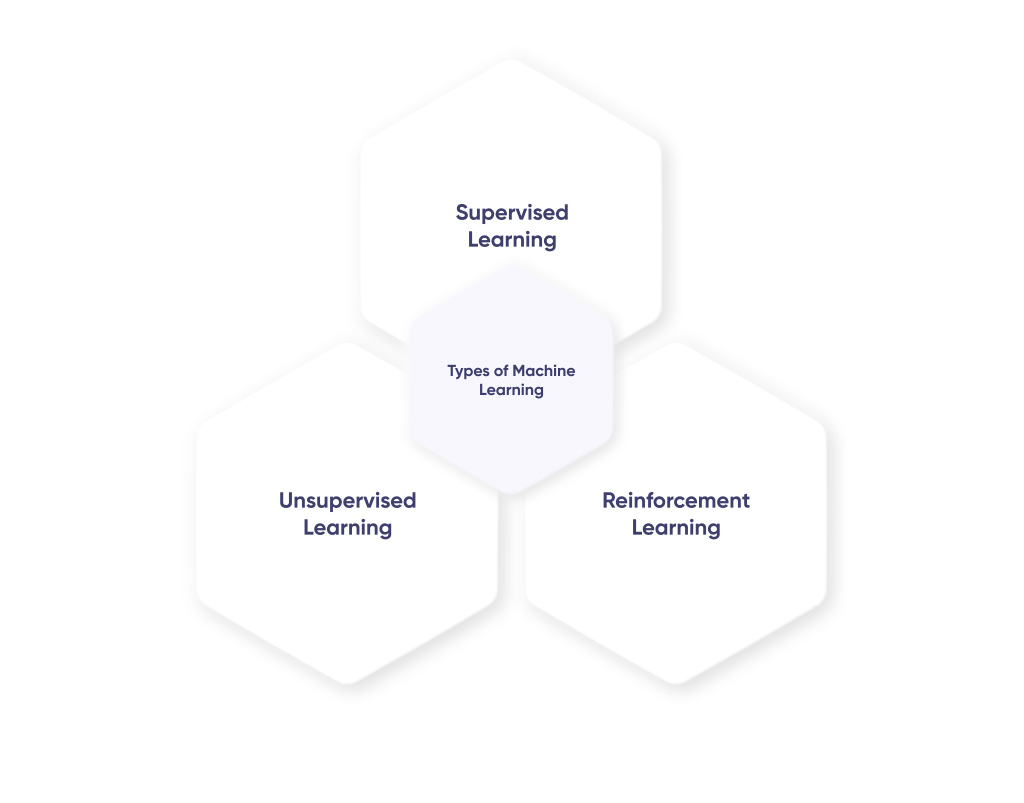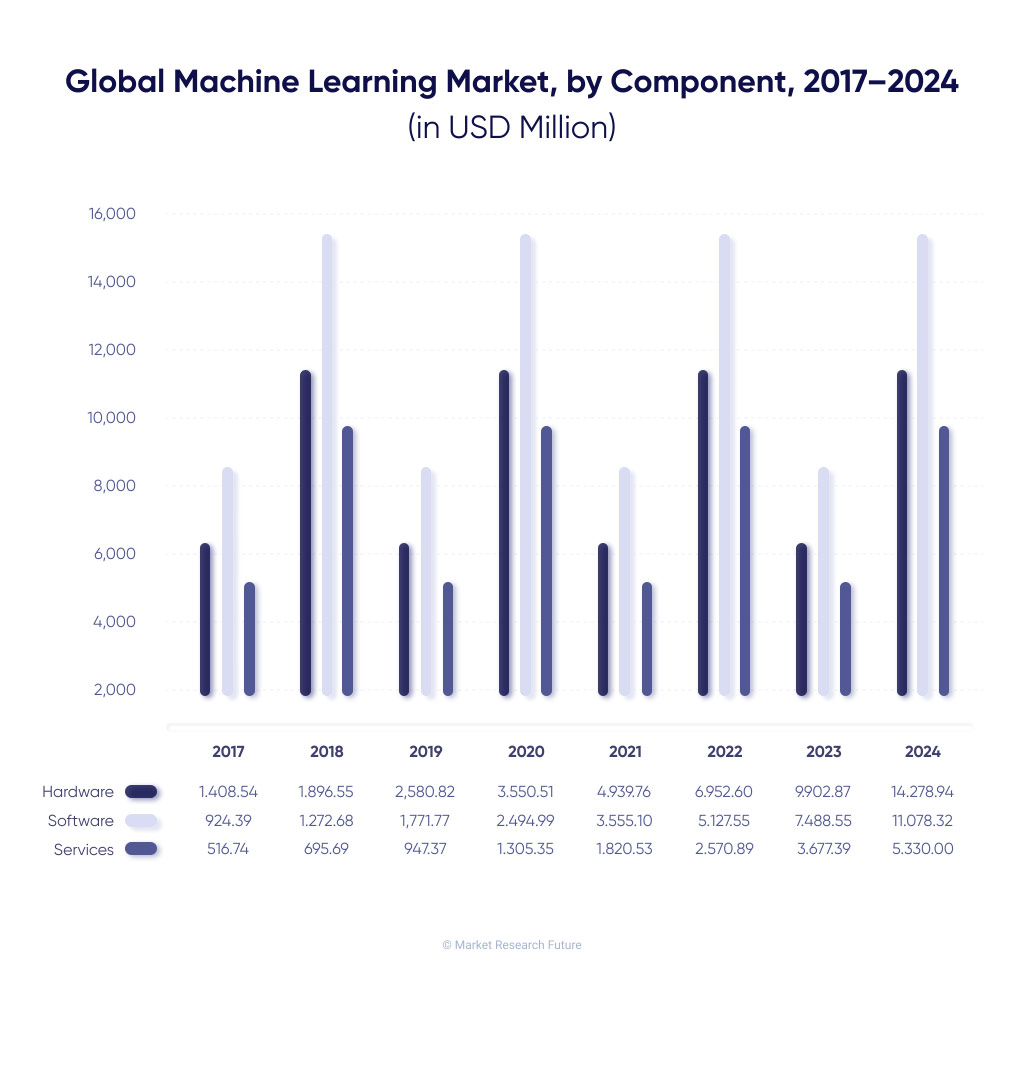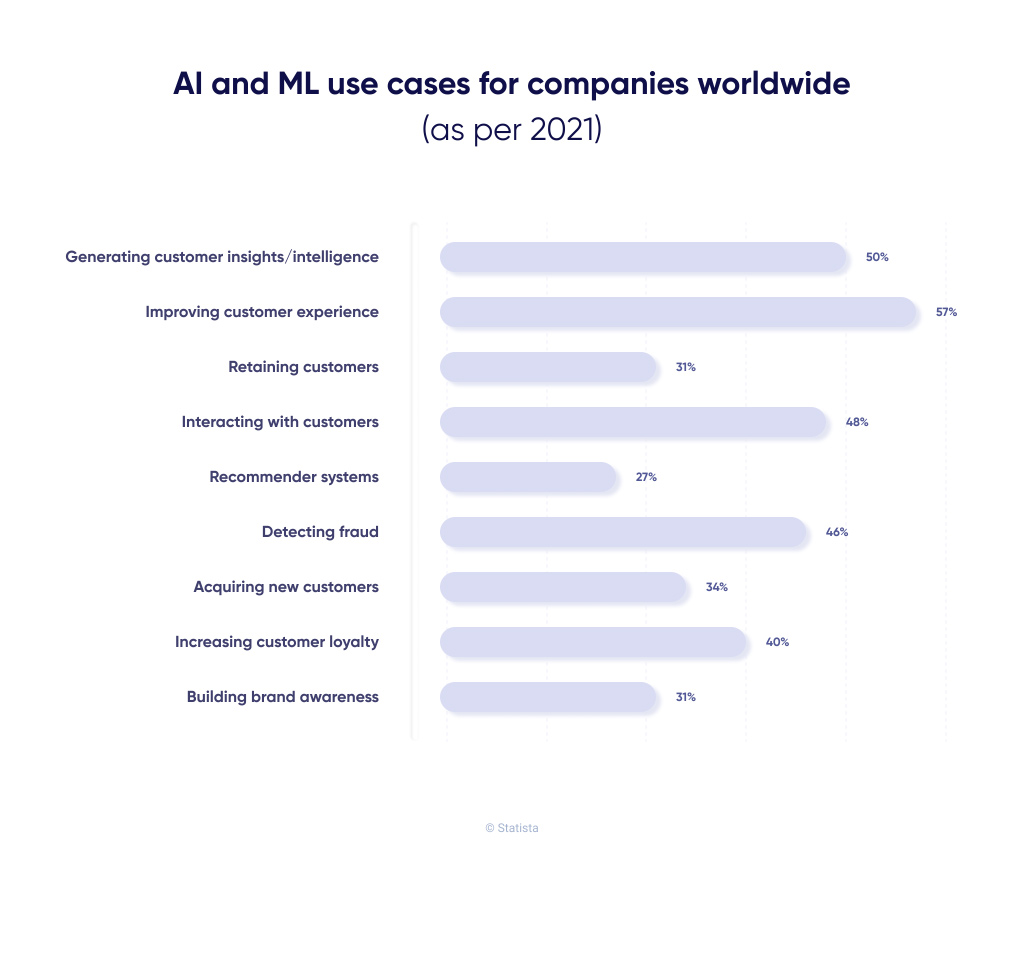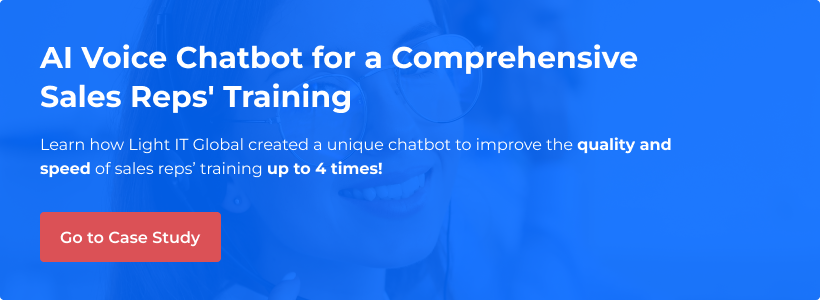Machine learning in education may seem like another buzzword aimed to force entrepreneurs to dip into their pockets and innovate for the sake of innovation. But in reality, it’s actually quite the opposite. The companies that have already introduced ML into their practice recognize it as an effective tool bringing numerous significant business benefits to the table. And what’s more important, it is true both for popular brands with huge budgets and promising startups with very limited funding. In other words, any type of business can get the most out of this innovative technology.
This article aims to give you a comprehensive overview of ML usage in the modern education field so that you could make an informed decision regarding whether or not you need to incorporate machine learning into your business.
Machine learning concept and types
The concept of ML is simultaneously plain and hard to contemplate. It implies the ability of computer systems to learn and apply the gained experience to improve automatically. Therefore, machines are forced to learn how to analyze huge volumes of data, determine patterns and categorize the information. And even though the capabilities of modern technology are somewhat limited, computers still can do many things that once seemed impossible.
Think of Siri and Alexa interacting with their owners, Facebook recognizing faces on photos, Google Assistant knowing your voice, online translators offering you better translation options. All these pieces of technology that seem so common now leverage the power of machine learning.
Being a “branch” of artificial intelligence, ML still has some differences. The dividing line between these two concepts is quite simple. AI aims to create machines that will adopt the human way of thinking and imitate human-like behavior. ML focuses on systems learning from data and without the need for explicit programming.
But is ML a monolithic concept or there’s more to that? In fact, there are three types of ML that have some significant distinctions and can be used to perform different tasks.

Supervised ML
The core of supervised ML is the usage of labeled data “fed” to the system. The model is trained to analyze the received information until it can classify/predict the outcome accurately.
With the help of this approach, your email client is able to classify the letters and send the undesirable content straight to the spam folder. You can always give the system a hint by sending certain emails to spam or getting them out of spam manually.
It also allows improving the business — customer relations. With the power of supervised ML, the company is able to determine the audience’s intentions and attitude better. Besides that, supervised ML is the tool that guarantees the correct advertisement targeting.
Unsupervised ML
This type of ML is quite the opposite of supervised learning. The model receives a significant amount of unlabeled data and instruments that help it to understand the qualities of the info. As a result, the system adopts clustering and association to navigate the data and organize it in a human-understandable way.
A well-known example of unsupervised ML is Youtube’s recommendation feed. All the system has is the information regarding your views (types of content, duration, likes/dislikes, etc.,). Using this data and unsupervised ML, the platform discovers patterns that allow offering you videos that you may find interesting.
Reinforcement ML
The approach that is totally different from supervised/unsupervised learning, reinforcement ML uses the system's interaction with the environment plus certain rewards to stimulate the desired actions.
It’s like training a lab rat to find a way out of the maze. The model performs certain actions and gets constant feedback: either the error report or a reward. In the end, the system that made many mistakes at first learns to find the most efficient way to perform a task.
The real-life business example of reinforcement learning is the manufacturing of self-driving cars. That’s exactly how the vehicle is able to predict and perform the best trajectory during parking, choose the motion speed, etc.
As you can see, machine learning for education and other industries may take many different forms, but in the end, the outcome is always similar: a system is able to analyze the data thoroughly and perform the most effective actions. So, no wonder, the global ML market is expected to grow at a mind-blowing 42.08% CAGR over the next few years.

Machine Learning advantages for Edtech
Machine learning is powerful, innovative, and beneficial. Now when we’ve got that out of the way, let’s cover the most prominent perks ML can bring to any educational business. And the greatest thing about ML is that it’s beneficial both for the educational institutions and the companies willing to create some kind of product to monetize edtech.
A new level of customization
Nowadays, everybody’s willing to get a first-class personalized experience even when using the most generic product that is either extremely cheap or free. That’s the paradox of modern business.
On the one hand, it’s an amazing engine for progress, stimulating entrepreneurs’ creativity. On the other hand, it puts a lot of pressure on business owners and discourages them from investing in education.
Leveraging machine learning applications in education can solve many (if not all) of the problems regarding the lack of customization. And there are several ways to do that.
For example, if you’re planning to build an online learning platform with courses and classes, ML is required to help you with the following:
- customized new classes recommendations
- personal curriculum modifications
- learning speed adjustments
- determine the areas of weakness
The same principle can be applied to the modern LMS. Introduce machine learning to provide every customer/student with a one-of-a-kind experience.
- access to virtual assistants
- easier performance reviews
- seamless onboarding
- various educational plans depending on the customer’s needs/expertise
Machine learning truly brings personalization in education to a new level. Technology is able to analyze all the data generated by the user and tailor the system to meet the customer’s expectations. Therefore, a student doesn’t lose motivation and the retention rates remain high.
Time-saving
One of the greatest things about ML is that once it’s trained, it’s able to perform requiring little to no human interaction. The tasks delegated to machine learning will be performed automatically and almost instantly.
Whether you’d like ML to complete some kind of learning analytics (e.g. analyze the curriculum to find out if it meets the students’ mental capacity), take care of plagiarism checks, or introduce comprehensive grading, it will be done in a matter of seconds.
Advanced analytics
Machine learning and education are a match made in heaven because modern IT solutions can perform almost every form of analysis imaginable. We’ve already touched on the subject of ML analyzing content to provide students with adaptive learning. But that’s only one of many ways to benefit from the analytical power of ML.
Some other techniques include the following:
- All kinds of reports (attendance, academic performance, engagement, certification tracking, trainer/teacher approval, etc.)
- Measuring both quality and quantity of educational materials available
- Analyzing input data (number of logins, time spent on the platform, students’ background, emails, requests, etc.)
- Visualizing the information flow to determine existing issues and miscommunication sources
Is it possible to include analytics without bringing ML into the mix? Yes, it is, but the outcome won’t be as effective and helpful.
Improved user experience
If there’s one thing machines do better than people at all times, it’s, without a doubt, the completion of mundane tasks. People get tired and distracted. As a result, mistakes are basically inevitable.
The educational industry is no exception. Teachers and staff are forced to deal with scheduling, tracking attendance, collecting assignments, and many other tedious duties. ML lifts that weight off of customers’ shoulders and saves time. In the end, the daily drudgery is taken care of and the users are satisfied.
Basically, ML in education is that “magic tool” that takes away most of the struggles and leaves the audience with the fun part. The technology users interact with (learning platform, LMS, translation tool, spelling checker, etc.) delivers in the most comfortable way, ensuring a smooth user experience throughout all stages.
This asset is so powerful that 57% of companies use ML and AI specifically to improve the customer experience.

Behavioral Intent Prediction
ML can discover and prevent problems even before they occur. Predictive analytics detects specific patterns in the student’s behavior to further determine the audience’s intentions and triggers that provoke certain actions.
That is why machine learning in K-12 education is especially useful as behavioral prediction can even foresee a student's intent to drop out due to overwhelming pressure or poor academic record.
It also works the other way around: the teacher or the manager can get insights regarding the customer’s willingness to take another course or some kind of extracurricular activity. This is the kind of info entrepreneurs appreciate as it creates opportunities for repeat sales.
Increasing engagement and vary teaching methods
The era of smart tutors has just begun, but it already has millions of followers all over the world. Machine learning applications, bots, and assistants are frequently used in education as a new captivating way to get the students invested in the learning process.
Technology is the key to the students’ engagement these days as Gen Z are dependent on the Internet and their devices. 69% can’t handle being away from the Internet for more than 8 hours. If that doesn't speak volumes, think about 27%, who can’t imagine functioning without the Internet for more than an hour!
Thus, ML-based smart tutors help educational institutions and edtech businesses kill two birds with one stone: keep the students absorbed in the learning process and help teachers/coaches vary the teaching methods.
The variety of tools that can be used as smart tutors is truly impressive. It includes but isn’t limited to the following:
- chatbots
- video tutorials
- communication platforms
- tailored support solutions
Now combine a smart virtual assistant that guides a student through a personalized learning path with some elements of gamification, and you’ll receive a perfect tool that will keep the audience engaged and motivated. That’s what machine learning and education can do!
Larger audience and more inclusivity
ML-powered translation/transcription services are able to solve one of the main educational challenges: the lack of accessibility. With the help of technology, even the largest online-learning platforms with tons of educational materials can increase the number of students.
The business owner doesn’t have to hire expensive professional translators to make the available content accessible globally. ML and deep learning solutions do the job faster and at a lower price, while still keeping a decent quality level.
This approach also helps to include handicapped people in the learning process, as the information can be presented in different ways: as a text, audio, video, slideshow, etc.,
Consequently, more customers are able to use the platform and actually learn, and the entrepreneur obtains a larger audience to cater to.
Machine learning in education. Success stories
What better way to prove machine learning efficiency in education than showing real-life success stories? We’ve gathered several examples of the companies that have placed a bet on ML and won big.
Every solution in this list uses ML but does it differently. And even though all of the companies represent edtech, they are not direct competitors as every business found its own market niche and target audience.
Grammarly
Grammarly is one of the most popular online grammar checkers in the world. This tool not only reviews your spelling/grammar/punctuation but also takes care of plagiarism checks and helps with overall style and delivery. It’s one of the main reasons for the tool being popular not only among students but also among people working with the written word.
ML algorithms in Grammarly are constantly improved as the system takes into consideration all the users’ actions. For example, if the public considers the automatic suggestion a mistake and ignores it, the algorithm will learn and correct itself.
The tool’s fair accuracy is possible thanks to a combination of ML, natural language processing, and deep learning. Subsequently, the customers receive a helpful virtual assistant that corrects writing mistakes instantly and is available via several platforms (web, mobile).
SchooLinks
Unlike the previous example, SchooLinks utilizes machine learning for education more broadly. A college and career readiness platform helps the students to plan their educational journey thoroughly and choose the perfect career path based on their preferences, capabilities, and potential.
The platform analyzes all of the student-related data to provide the customer with any kind of assistance that may be required. For example, SchooLinks can help with the following:
- financial aid calculation
- determining personality profile
- college selection
- part-time job and internship search
- building a student’s portfolio
- course planning
- event scheduling
ML algorithms in this case take care of personalization, adapting according to the student’s performance, requests, behavior, and choices.
Quizlet
A popular global learning platform leverages ML algorithms to provide the students with a state-of-the-art learning assistant that manages the individual educational journey and helps to overcome various challenges that appear along the way.
For example, Quizlet’s learning assistant takes care of:
- Building individual study plans
- Comprehensive progress tracking
- Smart grading
- Targeted study sessions
The system also constantly improves itself as the students’ answers come back anonymized and are used to train the existing ML models.
The combination of gamification, machine learning, and all the benefits of adaptive learning, makes Quizlet extremely popular. The platform catches on with youth and the older audience that is willing to associate education with entertainment.
MobyMax
An award-winning edtech solution, MobyMax is known for the innovative adoption of AI and ML in education. The platform made itself a name offering the schools a complete adaptive K-8 curriculum and a wide number of ML-powered tools to close the learning gaps, increase students’ engagement, and provide teachers with the collection of formative and summative assessments.
MobyMax stands out from the competitors as the company has managed to create a multifunctional educational all-in-one hub with four separate solutions at hand:
- Real Rewards
- Differentiated Learning
- Interactive Class
- Quick Checker
Such a well-thought-out approach has made MobyMax an industry leader with thousands of customers and hundreds of awards.
Final words
In 2023 machine learning in education gathers momentum to fully blossom in the upcoming years. You don’t have to be a prophet to realize that the algorithms will become sharper, quicker, and more advanced. The power of ML will discover new horizons for edtech driving out traditional teaching methods and techniques.
Of course, it doesn’t mean that literally, every entrepreneur that owns an education-related business should spend thousands of dollars on machine learning. It’s not a silver bullet. But in many cases, ML can be quite effective and shouldn’t be overlooked.
Whether you already have an idea and would like to incorporate ML technology into the existing business model/startup or are just curious about the concept, don’t hesitate to contact Light IT and claim your free estimation or consultation. Our experts will be happy to assist!






